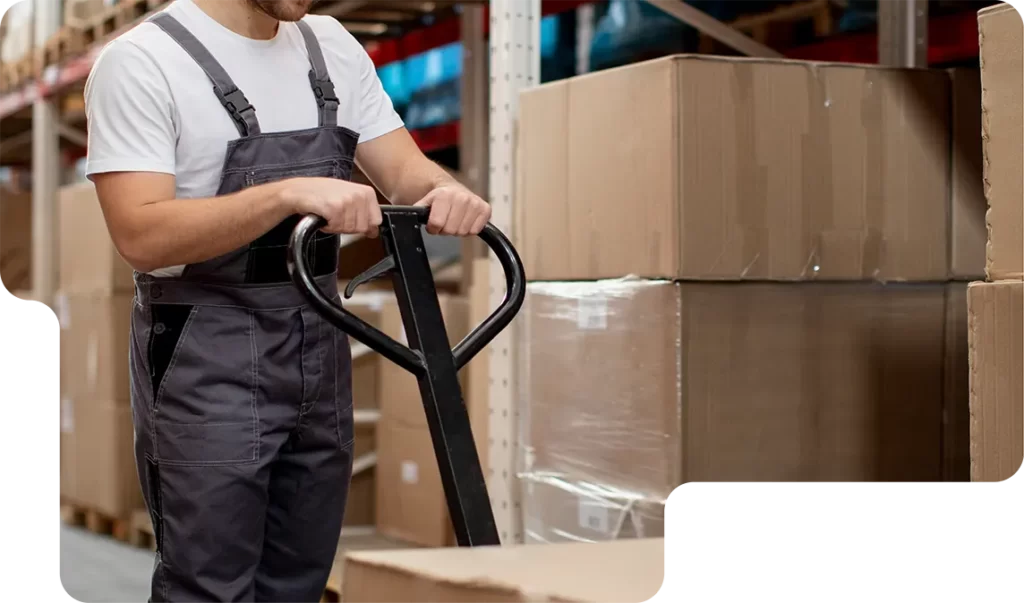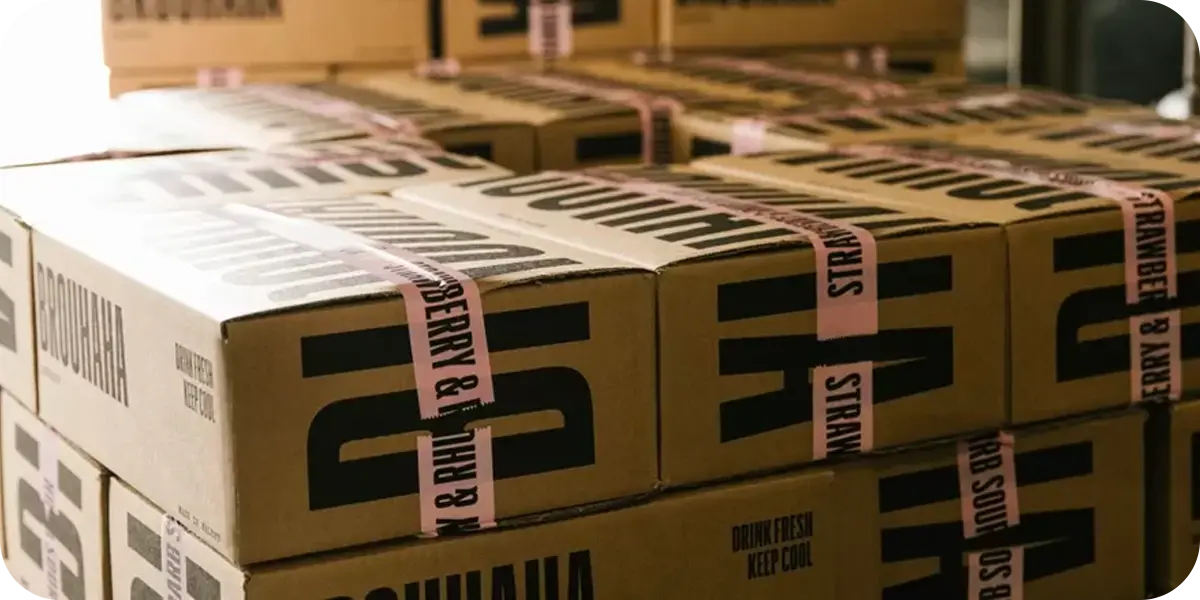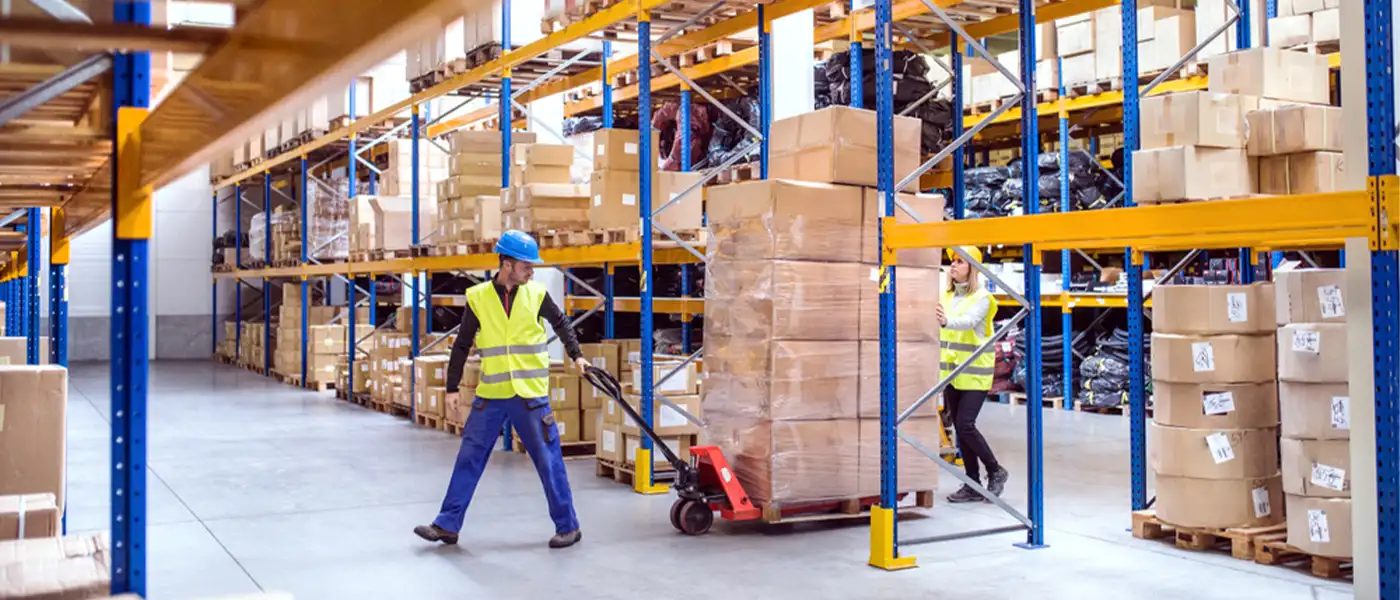What is Shipping Logistics?
Shipping logistics, in simple terms, refers to transferring finished items through a distribution system to the customers.
However, the shipping logistics plan is influenced by several variables, such as carrier alliances, cargo shipping, and procurement operations.
What is the Difference Between Shipping and Logistics?
It is often mistakenly believed that logistics and shipping are identical. However, the two differ noticeably from one another.
Transferring or conveying a shipment from one location to another is known as shipping. It is a confined phrase that solely refers to facts about shipping, including shipping prices, shipment paperwork, different delivery methods, and many others.
Contrarily, logistics refers to a considerably wider range of organizations or divisions. Shipping management is a component of logistics activities, whereas shipment is a short-hand and closed phrase.
For instance, although having a relationship, sales and marketing are two distinct phrases. Sales refer to the act of carrying out the specific duty of selling. But the term marketing covers a lot more ground than just sales. Similarly, logistics management only makes up a small portion of Shipping Management.
The size and scope of their respective operations are the primary distinctions between shipping and logistics. As logistics assures a proper flow of commodities from point A to point B, including storage and transportation, it functions on a far broader scale than shipping.
For effective supply chain management, shipping and logistics are equally crucial. The supply chain’s efficiency will dramatically decrease without well-planned logistics and shipping.
Types of Shipping Logistics
Online merchants frequently need to pay more attention to how essential a solid shipping logistics network is to their business success.
You need reliable networks to guarantee that your items are where they must be at all points in your supply chain.
For example, ensuring that merchandise is supplied precisely and on time can be achieved by comprehending production lead times and collaborating with reputable manufacturers and suppliers.
Inbound Logistics
The inbound logistics procedure includes moving raw materials from multiple providers to the company’s production facilities. It can involve procuring raw materials, storing and delivering goods used in manufacturing, and maintaining inventory. It focuses on the connection between the vendor and the company, management of the inventory, and manufacturing.
Inbound logistics involve various stages, such as:
- Procurement of raw materials
Acquiring raw materials is frequently the initial stage in the production of commodities. A firm must understand which raw materials are necessary for what quantities and locate suitable suppliers. It is critical to keep accurate records to minimize the overfilling of raw resources. This process also requires continual cooperation with suppliers and proper logistics.
- Acceptance of goods
The company must schedule loading appointments in advance to book terminals for the discharge of products after placing the order with the supplier. So that the investors can quickly designate an unloading space, keep the stock, and collect the goods when the raw materials arrive without any delay.
- Backward logistics
It describes moving products back from the seller or maker to the end user or client. The product must either be returned to the online store, reconditioned, refurbished, or permanently disposed of.

Outbound Logistics
Outbound logistics refers to all the actions involved in order processing, gathering, and transporting commodities to customers. It includes controlling a flow via multiple delivery choices, monitoring production, gathering the necessary quantities of inventory, picking and packing orders in accordance with precisely generated and processed invoices, and so on.
The success of a business or a company depends critically on the efficient operation of these outbound logistics processes.
- Order processing
The buyer first places an order on the e-commerce portal, which the warehouse subsequently validates. This is accomplished using the warehouse management system.
- Selection and Packaging
After confirming the order, the employees select the appropriate item from the inventory. The warehouse management system (WMS) then modifies the stock-keeping units, product count, and inventory.
The chosen goods are packed and marked with the customer’s information, and the carrier service sorts them.
- Shipping and organizing
The orders are picked up by the freight trucks and shipped to the appropriate fulfillment center after the packaged products have been sorted. Based on their delivery zones, the delivery workers pick up the orders after the goods arrive at the distribution center closest to the customer.
- Complete delivery
Delivering the purchased goods to the customer or end-door users is the last stage in the outbound logistics process. Customers for outbound logistics might be anyone from common consumers to large retailers.
Reverse Logistics
Logistics management that sends products back from buyers to vendors or producers is reverse logistics. Reverse logistics are needed for returns or exchanges after a client receives a damaged product.
Reverse logistics begin at the customer and work backward through the distribution network to the producer or the dealer. Reverse logistics can also refer to procedures where the customer is in charge of the product’s ultimate disposal, such as recycling, refurbishing, or resale.
Organizations use reverse logistics when items return from their origin via the distribution network to the seller and maybe back to the suppliers. The objective is to sell the product or recover some value from it. Returns are worth roughly a trillion dollars globally every year and have increased frequently with the rise of online shopping.
Here is the process involved in reverse logistics:
- Complete the return
The return process begins when a customer indicates they want to return goods. This step should specify the product’s condition and include a return authorization. Additionally, this procedure entails planning return shipments, approving reimbursements, and exchanging defective items.
- Handle returns
When rejected items arrive at the facility or a centralized distribution center, inspect them to determine the kind of return. One can begin sorting the products into the following categories for disposal: mend, resell either as new or a return, recycle, trash, or refurbish.
- Maintain returns movement
Send fixable products to the maintenance department to minimize the daily trash.
- Repairs
Move the returned item/equipment to the repair area after evaluating it and deciding whether the seller can fix it. Sell any marketable pieces.
- Recycling
All parts or items that cannot be repaired, reused, or resold should be recycled.
The Importance of Shipping Logistics (and Its Challenges)
Supply networks are intricate and delicate because they depend on customers’ constantly changing requirements. A supply chain cannot guarantee high value if it lacks well-organized transportation. As a result, logistics is one of the most important components in the overall performance of any distribution network.
- Logistics that are well-coordinated yield excellent business outcomes:
As a company grows and expands, it becomes more dependent on well-organized supply chains incorporating advanced logistics. This aspect of supply networks is crucial not just in the development of large-scale businesses but also in small or medium-scale businesses. And so, successful businesses use knowledgeable individuals to synchronize the rhythm of product flow feasibly and conveniently.
- Logistics assists businesses in providing value:
Consumer satisfaction does not simply refer to quantity or quality alone. It also entails the availability of resources. As improved logistics make your goods more accessible to a wider audience, sensible business owners see it as critical in delivering value for customers.
- Logistics aids in lowering costs and improving productivity:
Logistics has become the center of supply chain operations as world trade has grown in popularity. Business people have learned that they may cut expenses by forming alliances with other companies that provide transportation and warehousing. When organizations use such solutions to subcontract transportation and warehousing, their business efficiency increases.
- Logistics is the foundation of a successful supply chain:
When an effective marketing plan can gain customers, a dependable logistics solution can assist a company in developing and maintaining a great brand persona. However, disorganized logistics might result in client loss and reduced sales.
Challenges faced by shipping logistics:
Fuel prices:
Fuel prices are one of the most important contributing factors to the reducing transit costs problem because the higher the price of the fuel automatically increases transportation expenses.
Adapting new technology:
Despite the necessity for technological advances, staying on top of new improvements in business operations has become a problem for the logistics industry. These fresh prospects seem appealing, but implementation and integration can be challenging.
Governmental rules:
National, regional, and local authorities impose stringent guidelines on transporters due to delayed delivery of products, affecting customer satisfaction.
Installation & planning for technology:
Although businesses are aware of and endorse technological advantages, there are still some things that need to be solved regarding the cost of the latest technology and the need for assistance in putting the changes into practice.

How to Optimize Your Shipping Logistics?
Distribute your inventory
The shipping logistics are strongly impacted by how a product is distributed. A distributed inventory strategy will reduce shipping expenses and delivery times by holding your products in multiple fulfillment centers local to your customers.
Automate your order management and view real-time data
Your distribution network will be able to monitor progress, spot obstacles, and improve customer service if it is aware of and communicates the condition of orders in real time.
The first step in optimizing an order processing system is to closely check what’s happening with the orders. Track and internally communicate each order’s status to ensure the timely movement of products to the next step.
Implement a warehouse management system (WMS)
As your company expands, so does the desire for more area and improved logistics planning. Inventory control across several locations can be a challenging task. You’ll need a system to transmit and analyze warehouse-specific information if you control and operate several warehouses. Furthermore, if supply chain management is inadequate, the order fulfillment process and your e-commerce will experience unnecessary issues.
Choose the right carrier
Goods must be transported from a facility to the user through trade partners. It can be challenging for many companies to select a carrier because different firms require varied shipping skills to ensure that deliveries are carried out without a hitch.
Conclusion
To fulfill consumer preferences, supply chain management logistics are constantly changing. To satisfy these demands, businesses must enhance the logistics of their supply chain to speed up order fulfillment and dispatch the product quickly using the most dependable, cost-efficient, and timely method. Each component of the logistics model used by businesses to describe the supply chain keeps its focus, lowers costs, and moves fast and efficiently, building customer loyalty.
Also, to ensure that the appropriate item arrives at the right location at the right time, logistics aids businesses in understanding the critical KPIs, fundamental procedures, and long-term objectives of their supply chain.
FAQs
How to optimize your shipping logistics?
Here is how you can optimize your shipping logistics:
- Set up a robust logistical plan.
- Should choose a leading warehouse optimizer to improve the distribution network.
- Determine which areas of warehouse automation would be most advantageous.
Implement a quality approach.
How can logistics attract customers?
You can attract customers either by using inbound or outbound logistics.
Why is logistics important in shipping?
Logistics coordinates the intricate web of transportation, collecting, importing, and exporting activities, warehousing, inventory control, buying, production scheduling, and customer support. Businesses view logistics as a crucial component of the supply chain’s design.
How do you manage shipping logistics successfully?
Here are the ways of managing shipping logistics successfully:
- Come up with a solid plan
- Make sure to have a backup strategy
- Employ a logistics supervisor with excellent people abilities
Automize your system
What are the types of shipping services?
There are four major types of shipping services:
- On Road Shipping
- Air Cargo Shipping
- Rail Shipping
- Sea Cargo Shipping
Who are shippers in logistics?
A shipper often referred to as a carrier, is a person or business in charge of organizing and moving items from one location to another.
What are examples of logistics?
Amazon is well-known for its logistics strategy, which is enabled by the company’s global network of distribution, sortation, and fulfillment centres.
What are the 3 types of supply chain?
The 3 types of supply chains are:
- Purchasing
- Planning
- Logistics
What are the 4 areas of logistics management?
Here are the 4 areas of logistics management:
- Supply
- Distribution
- Production
- Reverse logistics






